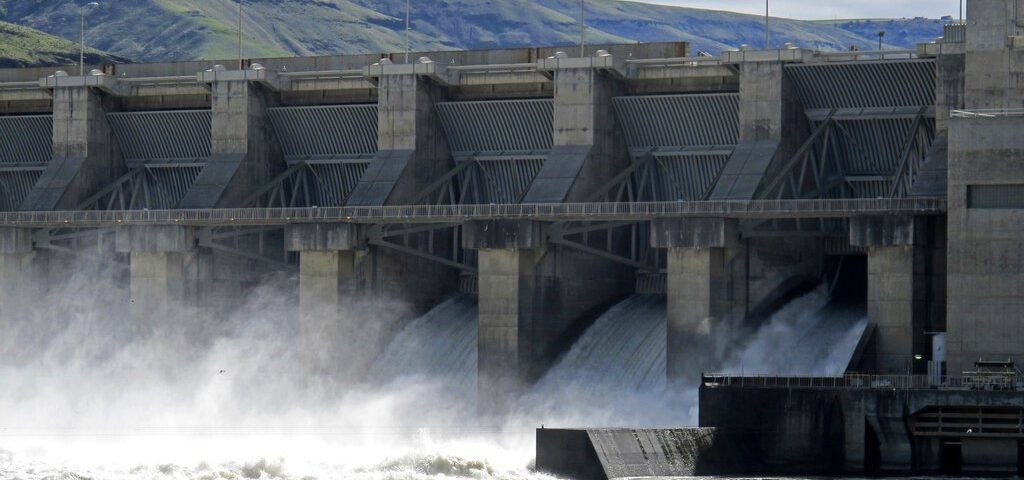
Keith Hyde’s Mission: Bring New Faces to Fishing
April 23, 2020
Northwest Steelheaders Stands in Solidarity
June 17, 2020Tempering Heat Pollution in the Lower Snake River
Oregon and Washington Governors are Urging Dam Operators to Mitigate Impacts
By Betsy Emery, Organizer and Outreach Coordinator
R ecently, there has been a lot of press about Oregon and Washington governors using their authority under the Clean Water Act to require dam operators to reduce the heat they are introducing into the Snake and Columbia Rivers. Heat pollution causes substantial stress and even death for endangered salmon and steelhead. This is an important development in the ongoing effort to protect salmon and steelhead in these rivers… but what does it mean to reduce “heat pollution” and how does that protect salmon, steelhead and our ability to fish?
First, we must understand the root of all of this: the Clean Water Act.
The Clean Water Act, passed in 1972, is one of the bedrock environmental laws in the U.S. Among other things, it provides the regulatory and legal foundation for water quality standards to ensure that waters in the U.S. are safe for fishing. Under the Clean Water Act, it is unlawful for entities to “discharge pollutants” into waterways. Polluters must obtain permits through the federal Environmental Protection Agency (EPA) or their State Department of Environmental Quality (DEQ) to regulate discharge.
This is a great way to reduce the pollution that new facilities discharge into waterways, but the lower Snake River dams and some of the dams on the mainstem of the Columbia were built before the Clean Water Act was passed and this permitting system was developed. Thus, these dams do not have pollution permits. Unfortunately, this means that there are limited opportunities for requiring these dams to reduce the pollutants they are currently discharging into the river—heat in particular.
Why is temperature considered a “pollutant” to salmon and steelhead?
Heat is explicitly identified as a pollutant under the Clean Water Act, making entities that heat waterways responsible for mitigating the temperature changes they cause. As anglers, we know that temperature changes have huge impacts on fish. Here in Oregon, our water quality standards have set a water temperature threshold of 68 degrees Fahrenheit for salmon and steelhead streams—the warmest water salmon and steelhead can survive in.
Unfortunately for these endangered fish, river water passing over three of the four dams on the lower Snake River regularly exceed this 68 degree temperature threshold throughout much of the summer (Figure 1). These figures, developed using the EPAs own modeling tool make it clear that dams on the lower Snake River are a major contributor to elevated water temperatures when compared to free-flowing temperature estimates. This is primarily because these dams create large, stagnant, and shallow reservoirs that are warmed by the sun. Not only do these fish experience substantial stress from having to pass through these dams, but this stress is exacerbated by the warm water that they have to make this journey in. Salmon and steelhead migrating upstream to their spawning grounds face high levels of stress and disease in these hot waters. Sustained periods in these high-temperature waters can cause fish to die.
The dams are heating the lower Snake River to a point that the river water temperature violates the water quality standards in Washington and Oregon.

Figure 1: Temperature of Snake River water passing through the Little Goose, Lower Monumental, and Ice Harbor dams is regularly exceeding the 68 degree water quality threshold for much of the summer.

What are Washington and Oregon doing to reduce the heat pollution these dams are causing?
Despite evidence that the lower Snake River dams cause potentially lethal temperature increases, the state of Washington and the EPA have not successfully responded to this issue because the dams were built before the permit system was established. Earlier this month, regulators changed their tone. Operating under their CWA authority, Washington’s Department of Ecology (DOE) sent a letter to dam operators (the Army Corps of Engineers) requiring them to obtain permits through the EPA. These permits would quantify the heat each dam is introducing into the river and identify ways to reduce that temperature discharge in order to ensure that the dams are in compliance with Washington’s water quality standards. In essence, operators would have to come up with a plan to keep the water cold enough for salmon and steelhead to survive their migration.
In mid-May, the state of Oregon followed suit. The Department of Water Resources sent a letter urging dam operators to reduce their temperature pollution. These dams heat up the water in Columbia’s largest tributary. As a downstream state, Oregon struggles to meet their water quality standards on the Columbia River as a result of the lower Snake River dams. In essence, Oregon needs the lower Snake River dams to reduce their heat pollution in order for them to meet their water quality standards.
While this is a historic, game-changing action from Washington and Oregon, dam operators are pushing back. Hydropower proponents are concerned that meeting the temperature standards could be unattainable without costly rate hikes for utility customers in hydropower-reliant areas and argue that water temperatures would exceed 68 degrees even without these dams - a point that’s been discredited by the EPA in their recent models and reports (their “TMDL”).
How much heat pollution can the Columbia and Snake Rivers withstand?
In order for these dams to obtain pollution permits through the EPA as Oregon and Washington are requiring, the EPA has to develop a “pollution budget” for how much heat the river can withstand. This is formally referred to as “Total Maximum Daily Load” (TMDL) and it identifies how much heat is being discharged into the river by each source. The EPA then uses the TMDL to determine how much dam operators must reduce their heat pollution to bring it back into compliance with water quality standards. The EPA released their TMDL for the Columbia and Snake rivers on Monday, May 18.
We’ve identified three key take-aways from the TMDL:
This is significant development for three main reasons:
As recreational anglers, we need to do our part to promote this progress. Please consider signing up for our Snake River email list, donating to our cause, or sharing this information with your peers!
Donate To Support Our Cause!



